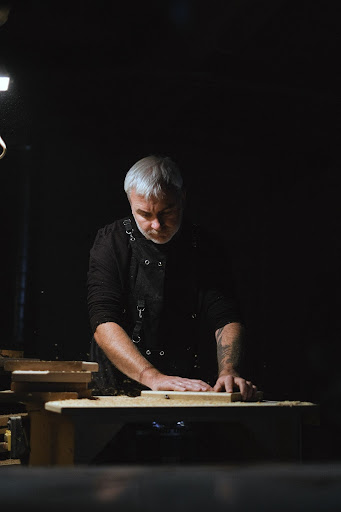Rubber compression molding dates back to the middle of the 19th century when the technique was first developed. Its continued use as a production technique is a testament to the benefits it offers. Larger, bulkier components made of rubber and, more commonly these days, plastic benefit greatly from compression molding.
A polymer is first heated and then placed into an open, preheated mold cavity to perform compression molding. Next, the top plug is used to seal the mold, and compression is applied to bring the material into full contact with the surface of the mold.
This method can create components of varying lengths, thicknesses, and complexity. The major example is professional cameras exhibiting characters regarding srt vs ndi technology.
Additionally, the products it generates have high strength, making the process appealing to a wide range of sectors. For the most part, thermoset composites are used in compression molding.
Let’s dive deeper into what sets compression molding apart from other types of part molding.
Table of Contents
Basic Four-Step Procedure
The compression molding process for thermoset composites entails four primary steps:
- The desired part’s specifications are used to fashion a high-strength, two-part metallic tool. The tool is then heated in a press after it has been installed.
- The composite material is fashioned into the form of the instrument ahead of time. Pre-forming is an essential process that boosts the final product’s functionality.
- Inserting the pre-shaped component into the hot mold. The instrument is then subjected to extremely high pressure, typically between 800 and 2000 psi (depending on the thickness of the part and the type of material used).
- Once the pressure has been released, the component can be taken out of the machine. At this point, we also get rid of the resin flash that formed around the edges.
How Does Compression Molding Differ From Injection Molding?
Compression molding, as well as injection molding, differ primarily in how plastic is introduced to a mold. While injection molding involves melting the plastic before injecting it into a closed mold, compression molding involves placing raw plastic in a preheated mold cavity and closing the mold to heat and pressurize the plastic.
Injection molding has the potential for a shorter cycle time than compression molding, making it more practical for high-volume manufacturing. Compression molding is commonly used to make simple components. However, the oldest method for mass-producing thermosetting materials or rubber components is compression molding.
Thermoplastics with high fiber content can be shaped using this method. In addition, the lower injection pressure allowed for simpler cavity filling and less mold-in stress, both of which contributed to better overall part quality.
Compression Molding Equipment
The high fiber content of long-fiber BMC necessitates high pressures of up to 138 bar (2000 psi), which necessitates matched-metal tooling to fill complex features. Also, the core as well as cavity halves of the tool need to have very tight tolerances because trapped air can get out, but fiber and resin can’t.
The combination of these factors during compression molding can result in higher tooling costs than those of standard lamination tools made from composite materials.
However, this is still cheaper than the expense of an injection molding tool. The cost of the tool should be recouped with 1,000 units of production, which is a common rule of thumb for a satisfactory return on investment in tooling.
The complexity of the component can increase or decrease the estimated cost. Aluminum molds, for instance, are more cost-effective than their steel counterparts, but they are less suited to mass production. Because more parts can be made in one mold cycle with a multi-cavity tool, mold costs can be kept in check.
What Sorts Of Goods Benefit From Compression Molding?
- Various automobile components, including major body panels, engine parts, tires, hoods, bumpers, and fenders
- Electronics, computer peripherals, and video games: adapters, joysticks, keyboards, mice, monitors, speakers, and speakers.
- Caps, gaskets, syringe stoppers, plugs, respirator masks, surgical gloves china, flow control valves, blood separation devices, ultrasound equipment, and more can all be found in the dental and medical departments.
- Products for the general public, including consumer electronics, bathroom fixtures, and kitchenware
- Bowls, O-rings, spatulas, cups, plates, seals, cookware, bottle dispensers, and nozzles all fall under the umbrella term “kitchenware.”
Relative Advantages Of Compression And Injection Molding
To begin, compression molding requires little upkeep on the part of the tool. As a result, greater throughput can be maintained with fewer interruptions.
Similarly, unlike injection molding, there is no gate in this molding process, which eliminates the need for a vestige gate and enhances the final product’s visual appeal. It allows for quicker and smoother color swaps.
However, this molding technique is restricted in its ability to create complex geometries or closures with a diameter greater than 48 mm.
Injection molding by top medical device injection molding companies is viable because it permits intricate part geometries, which could be used to realize unique closure characteristics.
Conclusion
Compression molding’s many advantages have made it a standard technique for fabricating rubber components.
These merits translate to savings that have made this method competitive with injection molding and extrusion molding in some applications.
As such, if you are a manufacturer interested in designing high-quality products at the lowest possible cost, you should think about this molding process.
